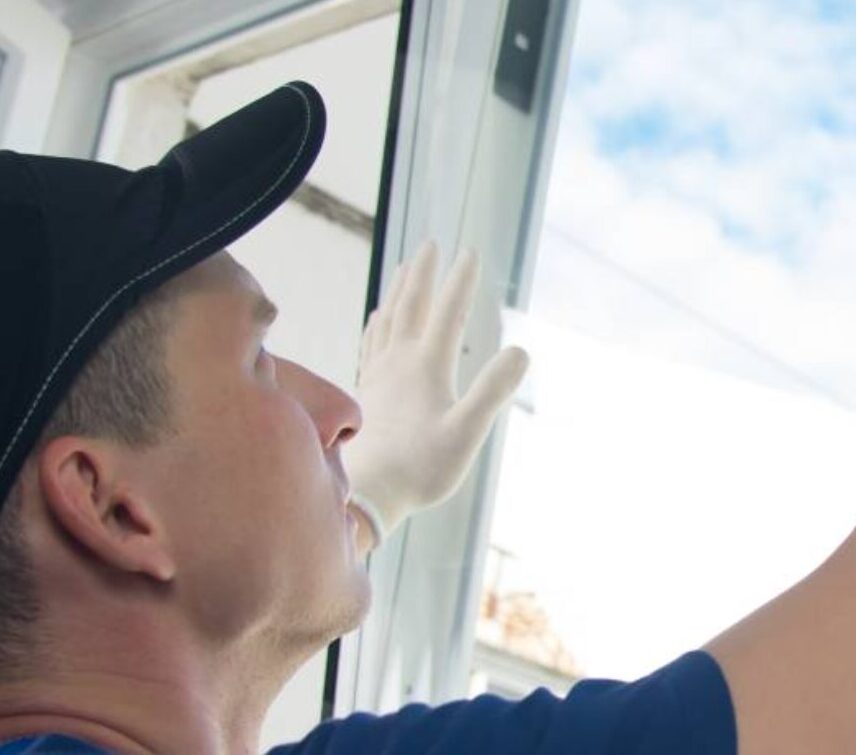Introduction: The Hype vs. Reality of the Young Architects Program in 2025
The Young Architects Program (YAP), created by MoMA (Museum of Modern Art) and MoMA PS1, is widely celebrated as one of the most prestigious opportunities for emerging architects. By offering young professionals the chance to design a large-scale, outdoor public installation at MoMA PS1, YAP has provided unparalleled exposure and career opportunities for many young architects. The program is often considered a milestone in the careers of emerging professionals, offering visibility, hands-on experience, and the chance to push creative boundaries in a highly publicized environment.
Yet, despite the accolades, is YAP right for you in 2025? Behind the excitement and potential lies a demanding and competitive process that is not necessarily suited to every architect or firm. While the program offers immense opportunities, it also places heavy demands on applicants, from resources and time to creativity and organizational skills. The competition is fierce, and even talented, innovative architects may not secure a spot.
This blog aims to provide a critical analysis of the Young Architects Program and help emerging architects determine whether this prestigious opportunity is the right fit for their
careers in 2025. By examining the program’s timeline, key benefits, challenges, and potential misconceptions, this blog will help you decide whether the YAP journey aligns with your goals and whether it will provide the career boost you’re seeking.
Timeline: The Evolution of YAP and Its Growing Prestige
To understand the significance of the Young Architects Program and whether it’s right for you, it’s essential to grasp the history and evolution of the program. Since its inception, YAP has grown in both prestige and impact, providing architects with an incredible platform for exposure and growth.
● 2000: The Young Architects Program was established by MoMA and MoMA PS1 as a way to support emerging architects by providing them with a platform to create innovative public installations. The program aimed to push creative boundaries and engage the public through architecture that was accessible, experimental, and transformative.
● 2010s: Over the years, YAP’s stature grew, with winners attracting substantial media attention. MoMA PS1 installations became an essential step in the careers of many young architects, leading to offers from top firms, professional recognition, and international career opportunities. By this point, winning YAP had become a marker of success in the architectural world, with an increasing number of architects and firms vying for the opportunity.
● 2020s: During the 2020s, the program continued to expand in influence, reflecting the architectural field’s growing emphasis on diversity, inclusivity, and sustainability. More firms and applicants from diverse backgrounds applied, and the installations began to address pressing social issues such as environmental responsibility, social justice, and community engagement. The complexity of design and execution increased, with MoMA PS1 installations becoming more sophisticated and culturally relevant. The emergence of virtual components in the aftermath of the COVID-19 pandemic further emphasized the evolving nature of the program.
● 2025: The Young Architects Program in 2025 remains one of the most prestigious and competitive opportunities for young architects. As the program continues to push the envelope in terms of innovation, social impact, and creativity, it also presents new challenges for applicants. The program remains highly selective, offering unparalleled exposure but demanding both exceptional design and strong project management skills.
Key Factors to Consider: Is YAP Right for You?
Deciding whether the Young Architects Program is the right fit for your career involves evaluating your readiness for its demands. Below, we examine both the strengths of the program and the challenges applicants may face.
Strengths of YAP
Winning the Young Architects Program can offer a host of significant career benefits. Here are the main reasons why you might consider applying:
1. Platform for Innovation
YAP provides an unparalleled opportunity to experiment with design, materials, and architecture on a public stage. The program encourages architects to push the boundaries of form and function, creating something bold and experimental. This kind of creative freedom is rare in the traditional architectural field, where projects often have stricter guidelines and constraints. For emerging architects eager to showcase their ability to innovate, YAP offers a platform to turn conceptual ideas into real-world applications.
2. Career Boost
The visibility and professional recognition that come with winning YAP are invaluable. MoMA PS1 is an internationally recognized institution, and the exposure from having a design installed in such a prominent location can significantly boost an architect’s career. The publicity surrounding the project can lead to media coverage, professional offers, and the attention of other influential architects and firms. For architects just starting out, this kind of exposure can help open doors to further commissions and career advancement.
3. Professional Network
One of the most valuable aspects of YAP is the network it provides. As a winner, you’ll gain access to influential curators, sponsors, other prominent architects, and past YAP winners. These connections can be incredibly beneficial in furthering your career. The chance to network with established professionals, receive mentorship, and form collaborations can provide long-term support and opportunities that last well beyond the completion of the installation.
4. Creative Community
YAP fosters a collaborative environment, where architects, artists, engineers, and other professionals work together on a single project. This multidisciplinary collaboration can provide invaluable learning experiences and expand your professional capabilities. Working alongside creative individuals from various disciplines will broaden your perspective and inspire new ideas, making you a more versatile and well-rounded architect.
Challenges and Potential Misfits
While YAP offers incredible opportunities, it also comes with significant challenges. It is not the right fit for everyone, and some applicants may find that the program’s demands outweigh its benefits.
1. Resource Intensive
Applying to YAP and executing the final design requires significant resources. The application process itself involves the preparation of a detailed portfolio, conceptual sketches, and models, all of which demand time, effort, and, often, financial investment. For solo practitioners or smaller firms without institutional backing, the resources required to put together a competitive submission can be prohibitive. Additionally, if you win, the project execution demands further resources, including fabrication, construction logistics, and material sourcing. Managing a high-profile installation at MoMA PS1 can strain smaller teams or less-funded firms.
2. Highly Competitive
YAP is an extremely competitive program. Thousands of applicants from around the world apply, but only one or a few winners are selected each year. Even reaching the finalist stage is a significant achievement, but the competition remains steep, making the success rate low. This level of competition means that a high-quality proposal is essential, and while creativity is critical, so too is your ability to present a well-researched, feasible, and compelling design.
3. Project Management Burden
The project doesn’t end after winning the competition. Once selected, the architect must manage the design, construction, and installation of the project. This involves coordinating with contractors, suppliers, engineers, and MoMA PS1 to ensure everything is completed on time and to the highest standards. Balancing the demands of YAP with other ongoing work or academic commitments can be challenging. The time commitment is substantial, and the need for excellent organizational and project management skills is crucial to delivering a successful project.
4. Not Ideal for All
While the program is an incredible opportunity, it may not be the best fit for everyone. For solo practitioners or architects who lack a strong support team, the demands of YAP especially in terms of collaboration, fabrication, and project management can be overwhelming. Additionally, the intensity of the process may not align with those who are looking for more immediate or financially rewarding opportunities. YAP requires a balance of creativity, resource management, and coordination, which can be a tough combination for architects who are still building their teams or lacking institutional backing.
5. Impact Variance
Winning YAP certainly brings visibility and recognition, but translating that into sustainable career growth is not always guaranteed. While some winners experience immediate opportunities, others find that the recognition doesn’t always lead to more commissions or career advancement. Many factors, such as market conditions, follow-up efforts, and the architect’s ability to leverage the recognition, influence whether YAP leads to long-term career success.
Questions to Ask Yourself Before Applying
Before committing to the Young Architects Program application, consider the following questions to determine if this opportunity aligns with your professional goals and resources:
● Do you have a strong, multidisciplinary team ready to collaborate? YAP requires collaboration across multiple fields, from engineering and materials to art and design. Having a team with diverse expertise will increase your chances of success.
● Are you prepared to invest significant time over several months in design, prototyping, and installation? Winning YAP requires an immense time commitment, from developing your initial proposal to overseeing the installation process. Are you ready to dedicate this time while balancing other responsibilities?
● Can your concept balance creativity with practical buildability under budget constraints? The project needs to be both visionary and feasible. Can you present a design that pushes boundaries while being realistic in terms of materials, budget, and structural challenges?
● Do you have access to mentors or advisors familiar with YAP or similar programs? Having guidance from experienced professionals who understand the program’s nuances can be invaluable. Do you have a support network to help you refine your proposal and navigate the competition?
● Is your goal more about recognition and creative challenge, or immediate career returns? Winning YAP provides significant exposure, but it doesn’t necessarily lead to immediate financial or career gains. Are you looking for recognition, or do you need immediate financial returns from your work?
Recommendations for Potential YAP Applicants
If you decide to apply, here are some recommendations to improve your chances of success and maximize the career boost that YAP can provide:
1. Start Early
Begin the application process well in advance—at least six months before the deadline. This will give you time to develop a compelling concept, create high-quality visuals, and refine your proposal. Preparation is key to presenting a polished and professional submission.
2. Build a Support Network
YAP projects require a team of collaborators. Engage fabricators, engineers, and past participants to help bolster your proposal. Their input and expertise will help strengthen your design and ensure that your proposal is both creative and feasible.
3. Focus on Storytelling
The most successful proposals often address current societal, environmental, or cultural issues. Make sure your design clearly communicates the story behind it, emphasizing how it responds to contemporary challenges and engages with the public.
4. Balance Innovation and Feasibility
Judges look for groundbreaking designs, but they also want to see that your proposal can be built within the given budget and timeline. Striking the right balance between innovation and practicality is crucial to success.
5. Explore Alternative Programs
YAP is a fantastic opportunity, but it’s not the only one. Consider exploring other competitions, fellowships, and grants that may offer similar creative freedom and career opportunities. Expanding your horizons can open new doors for growth.
Conclusion:
The Young Architects Program offers an incredible opportunity to elevate your career, gain exposure, and push creative boundaries. However, it’s not a one-size-fits-all solution. The program demands significant resources, time, and a collaborative team, and the competition is fierce.
Before applying, carefully evaluate whether YAP aligns with your goals, resources, and professional development needs. If you are prepared for the challenges and ready to seize the opportunity, YAP can undoubtedly be a career-defining experience. But success requires not only talent but also strategic preparation, resource management, and resilience.
In 2025, emerging architects who approach YAP with clear goals, a well-prepared team, and a realistic understanding of the process will be in the best position to harness the program’s full potential. If approached wisely, YAP can help you launch a meaningful career and make a lasting impact on the field of architecture.


